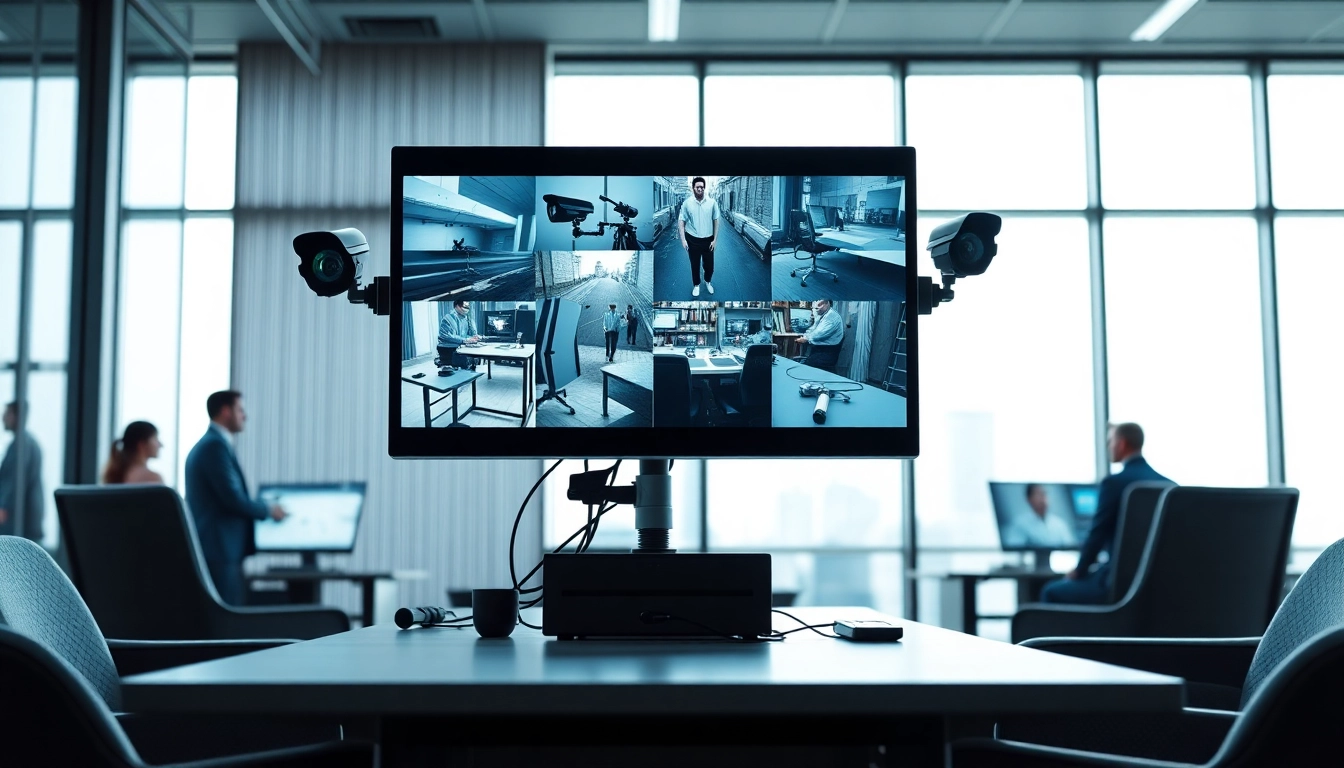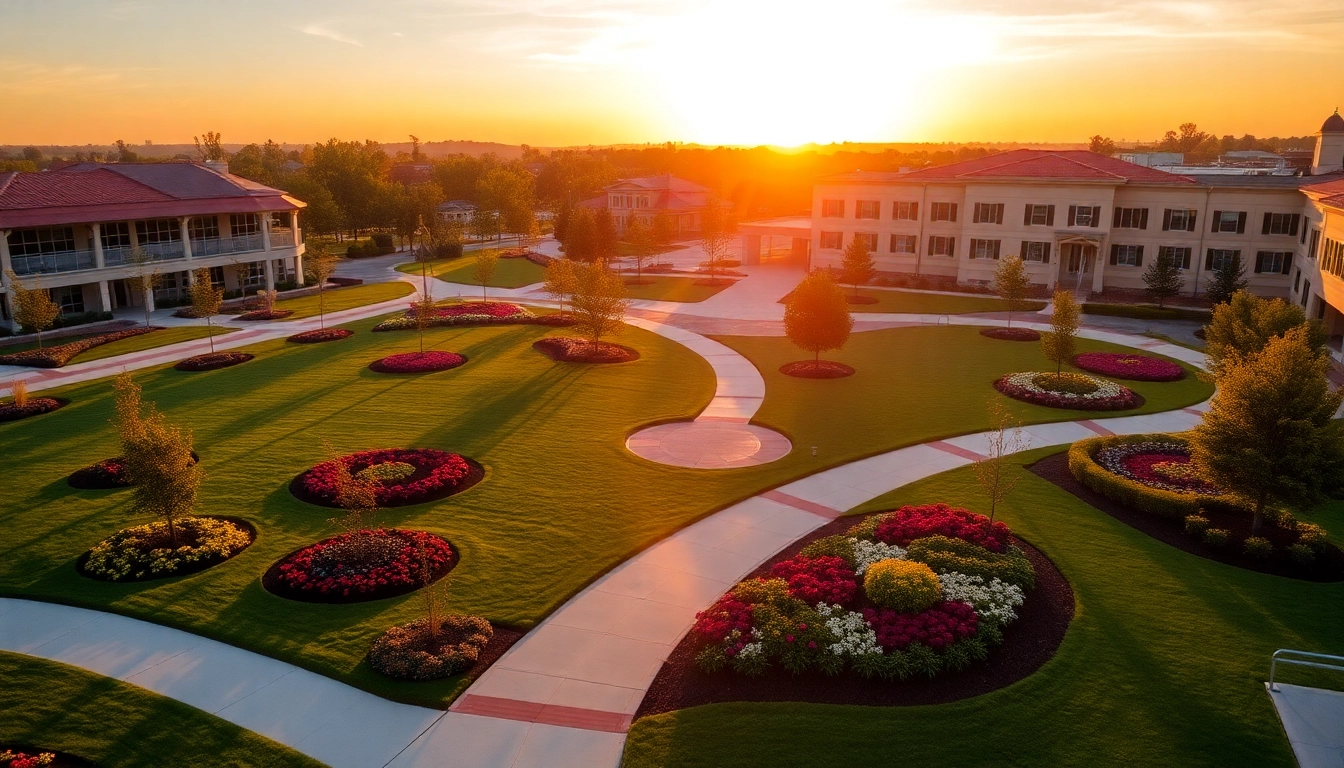Understanding CCTV & Remote Monitoring
As security concerns rise across all sectors, the need for effective surveillance solutions has become paramount. CCTV & Remote Monitoring have emerged as essential tools for enhancing safety, repelling intruders, and fostering a sense of security. This article delves into the intricacies of these technologies, exploring their components, benefits, and future trends in security management.
What is CCTV & Remote Monitoring?
CCTV, or Closed-Circuit Television, is a video surveillance system that captures real-time footage from cameras installed in various locations. Unlike broadcast television, CCTV systems transmit images to specific monitors or recording devices, enabling businesses and homes to keep a watchful eye on their properties. Remote monitoring complements CCTV by allowing trained personnel to observe footage from a distance, often utilizing cloud storage and secure internet connections to provide round-the-clock surveillance.
Key Components of CCTV Systems
A comprehensive CCTV system consists of several integral components that function collaboratively to ensure effective surveillance:
- Cameras: High-resolution cameras are fundamental, employing technologies such as infrared capabilities for night vision and different lens types based on the coverage requirements.
- Digital Video Recorders (DVRs): These devices store video footage collected by the cameras, allowing for later review and playback. Advanced systems integrate cloud storage for enhanced security and accessibility.
- Monitors: These screens enable real-time viewing of camera feeds, with configurations varying from single to multiple display setups depending on the surveillance needs.
- Networking Equipment: Routers, switches, and cables facilitate communication between different components, ensuring seamless data transfer. In IP-based systems, networking is crucial for real-time remote access.
- Software: Management software provides functionalities ranging from simple playback of recorded footage to advanced analytics for threat detection and system management.
Benefits of Implementing CCTV & Remote Monitoring
Implementing CCTV & Remote Monitoring systems offers numerous advantages, including:
- Deterrence of Criminal Activity: The presence of cameras can significantly reduce the likelihood of burglary and vandalism, as potential criminals recognize the risks of being recorded.
- Real-time Monitoring: Continuous surveillance enables immediate awareness of activities, allowing timely responses to threats or emergencies.
- Evidence Collection: Recorded footage serves as valuable evidence for investigations and can be crucial in legal disputes or insurance claims.
- Operational Oversight: Businesses can monitor employee productivity, customer interactions, and operational processes, leading to improvements in efficiency and service quality.
- Remote Access: Modern systems allow users to monitor their properties via mobile apps or secure internet connections from anywhere in the world.
How CCTV & Remote Monitoring Works
Real-Time Footage Transmission Explained
The functionality of CCTV systems hinges on their ability to transmit footage in real time. When a camera captures video, it encodes the data and sends it to the DVR or a cloud-based storage system. Depending on the setup, users can access live feeds through dedicated monitors or mobile applications. This instant transmission of data reduces the response time to incidents, allowing security personnel to act swiftly when necessary.
Data Security in Remote Monitoring
Data security is a paramount concern in remote monitoring setups, as unauthorized access to surveillance feeds can pose a significant risk. To mitigate these threats, CCTV systems often employ encryption methods, multi-factor authentication, and secure password protocols. Users are recommended to regularly update their firmware and software to protect against vulnerabilities and unauthorized access attempts.
Evaluating Threats with Monitored CCTV
Monitored CCTV systems leverage analytics and artificial intelligence to evaluate real-time footage, identifying suspicious behavior or potential threats. For example, motion detection features can alert security personnel to unusual activity, while facial recognition technology can enhance security by identifying known offenders. As monitoring staff assess these alerts, they can determine the necessary response, whether that involves dispatching security personnel or notifying law enforcement.
Best Practices for Effective CCTV & Remote Monitoring
Strategic Camera Placement Techniques
Effective surveillance begins with the optimal placement of cameras. Key strategies include:
- Identifying Vulnerable Areas: Analyzing the property layout to determine locations that are more susceptible to unauthorized access, such as entry points, parking lots, and blind spots.
- Field of View Optimization: Ensuring cameras cover critical areas without overlapping too much, maximizing the overall coverage while minimizing the quantity needed.
- Height Considerations: Installing cameras high enough to deter tampering while ensuring that they can capture clear images of faces and license plates.
Maintaining Your CCTV Equipment
Regular maintenance of CCTV equipment is vital to ensure optimal performance. Key maintenance practices include:
- Routine Inspections: Conduct visual checks on camera lenses and housing to ensure they are clean and unobstructed.
- Firmware Updates: Keep software tools and equipment firmware updated to leverage the latest security features and improvements.
- Testing Equipment: Periodically test cameras and recording systems to confirm they are operational and viewable feeds are functioning as expected.
Regularly Updating Monitoring Protocols
As security needs evolve, so too should monitoring protocols. Regularly reviewing and updating these protocols ensures they remain effective:
- Assessing Incident Response Plans: Re-evaluating how security staff will react to various types of alerts and incidents based on past experiences.
- Training staff: Regularly conduct training sessions for personnel on how to monitor feeds effectively and respond to incidents appropriately.
- Integrating New Technologies: Evaluating emerging technologies for potential integration into existing systems to enhance monitoring capabilities.
Comparative Advantages of CCTV & Remote Monitoring
CCTV vs. Traditional Security Measures
Compared to traditional security measures, such as on-site guards, CCTV & Remote Monitoring offer unique advantages:
- Lower Cost: Deploying CCTV systems generally incurs lower ongoing costs than maintaining a full-time security staff.
- Continuous Coverage: Unlike average security personnel, CCTV systems provide around-the-clock surveillance without breaks.
- Deterrent Effect: The visibility of cameras alone can discourage criminal activity more effectively than physical barriers or on-duty guards.
Cost Considerations in Choosing CCTV Solutions
Investing in a CCTV & Remote Monitoring system requires careful consideration of costs, which can be broken down into:
- Initial Setup Costs: This includes purchasing cameras, installation services, and wiring, as well as any software needed for monitoring.
- Operational Costs: Ongoing expenses may include maintenance, storage solutions, bandwidth for transmission, and potential staffing for monitoring.
- Long-term Savings: While there may be an upfront cost, the long-term benefits—such as a reduction in theft and fraud—often outweigh initial investments.
Scalability of CCTV & Remote Monitoring Systems
Scalability is a significant advantage of CCTV & Remote Monitoring systems. As businesses grow or change, adding additional cameras or upgrading existing systems can often be done without extensive infrastructure changes. The modular nature of these systems allows for easy expansion, catering to evolving security needs without requiring complete overhauls.
Future Trends in CCTV & Remote Monitoring
Emerging Technologies in Surveillance
The landscape of CCTV & Remote Monitoring is evolving rapidly, with emerging technologies promising to enhance capabilities:
- Artificial Intelligence: AI algorithms can analyze footage to identify unusual activities or patterns, significantly improving the speed and accuracy of threat detection.
- Advanced Analytics: Systems incorporating video analytics can provide real-time insights, like crowd density analysis or behavior prediction, enhancing security responsiveness.
- Integration with IoT: As IoT devices proliferate, CCTV systems can integrate with various sensors to provide a comprehensive view of security across assets.
Integrating AI into CCTV Monitoring
AI integration into CCTV monitoring is shaping the future of surveillance. By utilizing machine learning, systems are enhancing their ability to recognize faces, differentiate between human and vehicle movements, and monitor unusual patterns. This reduces both false positives and manual monitoring workloads.
Legislation Impacting Remote Surveillance Practices
As technologies evolve, so does the regulatory landscape concerning surveillance practices. Compliance with privacy laws is crucial. Organizations will need to stay informed about regulations pertaining to data storage, consent, and the use of patented technologies like facial recognition. Being proactive in these areas not only avoids potential legal ramifications but also enhances consumer trust through transparent practices.



